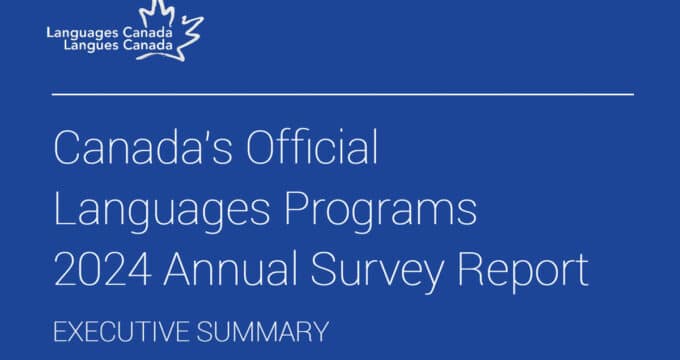Germany strengthens its stance as 4th most popular study destination in the world
Lately it seems that Germany is taking a number of steps to boost its appeal among international students... and it's working - new figures reveal that over 250,000 foreign students are now enrolled in German institutions. In May of this year, ICEF Monitor reported that Germany eased post-study work and immigration legislation for foreign students, with a new law allowing far-reaching changes going beyond the standard EU requirements. The move to enable more foreigners to work in Germany may be due to the fact that even at a time of economic crisis, the employment rate among tertiary graduates in Germany continues to rise. Over recent years, the supply of tertiary-educated workers in Germany has begun to accelerate, but growth in demand still appears to be outpacing supply. Recently, in a forward-thinking move to attract foreigners with less-than-perfect Germany language skills, the Karlsruhe Institute of Technology (KIT) in western Germany has launched a new programme that automatically transcribes lectures and translates them into English. The result appear almost simultaneously on a student's computer screen, like subtitles on a film. The translation can be streamed live on the Web, and does not require students to install any special software. In addition to the live stream, students can also view any Powerpoint presentation in English. KIT's move is a positive step indeed, especially given that a survey conducted earlier this year demonstrated that a wider availability of information and services offered in English would be beneficial for international students in Germany. Not everyone is waving the German flag, however. Eight years ago, the country kicked off its "Excellence Initiative", which injected €2.7-billion into some 40 universities. While the effort has received extensive praise, a recent report by the Social Science Research Center in Berlin raises key questions about the programme, saying it has failed to create a more diverse higher education sector, focusses too heavily on research, and produced few lasting changes at universities. Horst Hippler, president of KIT and of Germany's national rectors' conference, felt otherwise: "As a whole, I think it has been a success," says Mr. Hippler. He says that some criticism in the report is premature and he also takes issue with the charge that the Excellence Initiative hasn't forged significant new partnerships, particularly because his own institution is the result of a 2009 merger. With the end of the programme set for five years from now, German universities are wondering what's next. Some have argued for extending the programme, saying its timeline was too short to build a lasting legacy. Hippler says the programme should end, but he wants the federal government to continue to play a role in financing higher education, which traditionally only German states have done.
"There is no question," he says, "that the federal government has to support universities in the future."
For additional background on Germany's education system and post-study employment rates, readers might want to review the OECD Indicator's Education at a Glance 2011 report.
2011 enrolments soar
For the first time, the number of foreign students registered at German universities surpassed a quarter million in 2011 – this represents 11.4% of all students in Germany - according to a new report from the German Academic Exchange Service (DAAD). "Most of these hail from China, with Russia, Bulgaria, Poland, and Austria following by a clear margin," the agency wrote in its press release. These results stem from the current issue of the report ''Wissenschaft weltoffen'' (Science Open to the World) which the DAAD publishes annually in cooperation with the HIS-Institute for Research on Higher Education (HIS-HF). Key focus is given to Chinese students, scientists, and researchers at German universities.
Overall enrolment picture
All in all, Germany has never seen so many foreign first-year students matriculate as in 2010, when the figure reached 66,400. Approximately half of Germany's international students come from Europe. Here the Eastern European states such as Russia, Bulgaria, Poland are the key players. And yet, the number of Western European students matriculated at German universities is continuing to grow. In this respect, the key countries of origin are Austria, France, and Spain. Recent reports have also indicated large numbers of Greek students are flocking to Germany as well.
After the US, UK, and Australia, Germany holds fourth place among the top destinations chosen by international students. However, in contrast to the above three English-speaking countries, Germany also has a high number of its own students pursuing studies abroad: the figure reached 115,500 in 2009. Thus it has a far better balance of internationally mobile students matriculated at home and abroad.
The power of Asia
Around a third of foreign students in Germany hail from Asia; reports earlier this year indicated enrolments from India were on the rise. And over the last few years, the largest proportion of foreign students has come from China. In 2011, the number of Chinese students matriculated at German university came to 22,828 – with the figure still rising. They have an above-average level of study success: “Discovering another understanding of what it means to study and learn is a very enriching experience for young Chinese”, highlights Professor Chen Hongjie from the renowned Peking university. German scientific culture characteristics such as independence, a critical stance, a systematic approach, and thoroughness leave a deep impression, says Professor Chen. An underlying reason for this rising trend is the existence of 750 cooperations between German and Chinese universities. “Increasingly, the trend is not limited to the exchange of students, scientists, and researchers but also encompasses the joint development of curricula or even the export of entire study courses to China”, explains Niels Albers, head of the DAAD’s China Division. Sources: DAAD


















